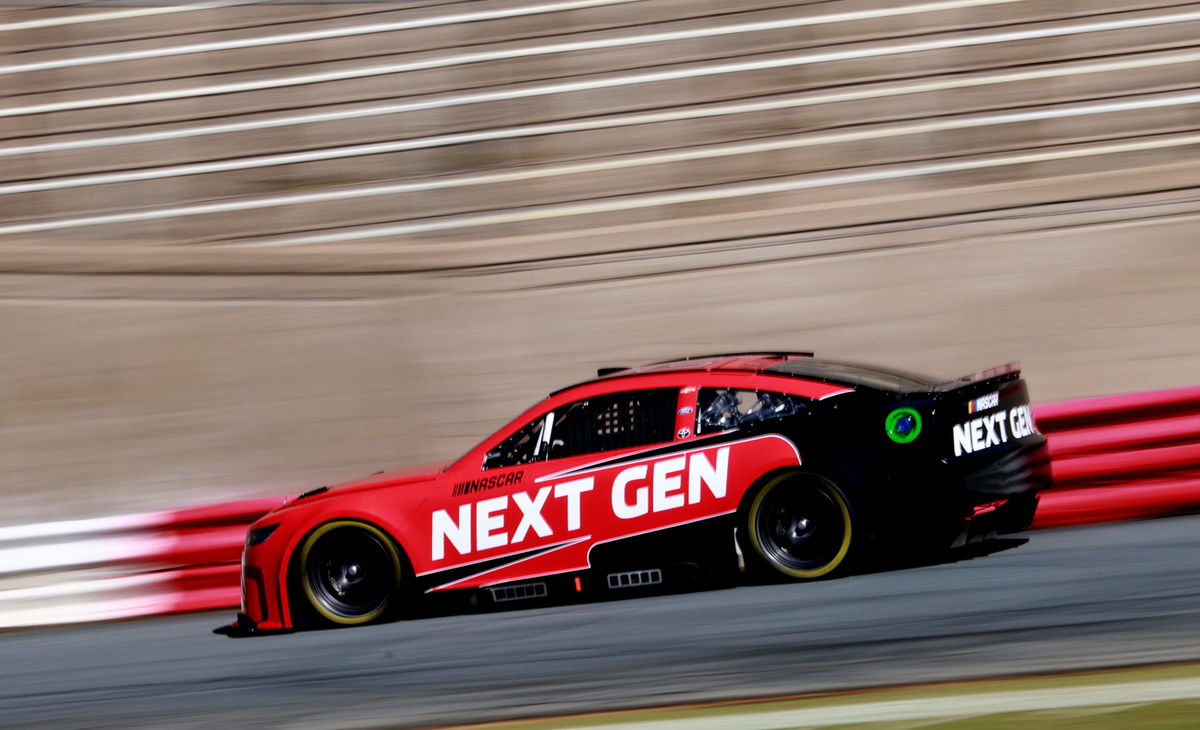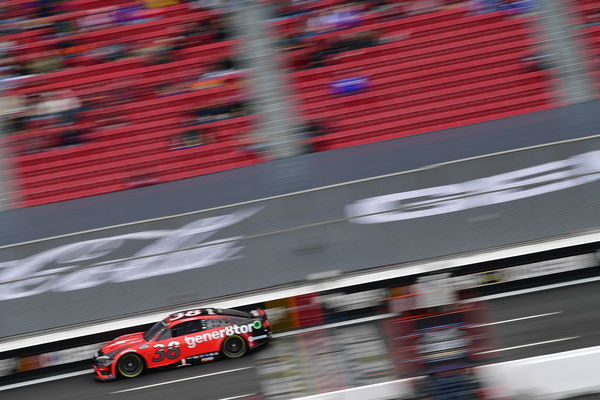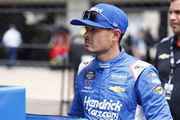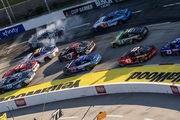
Getty
WINSTON SALEM, NORTH CAROLINA – OCTOBER 26: Dale Earnhardt Jr. drives the NASCAR Next Gen car around the track at Bowman Gray Stadium during a testing session on October 26, 2021 in Winston Salem, North Carolina. (Photo by Grant Halverson/Getty Images)

Getty
WINSTON SALEM, NORTH CAROLINA – OCTOBER 26: Dale Earnhardt Jr. drives the NASCAR Next Gen car around the track at Bowman Gray Stadium during a testing session on October 26, 2021 in Winston Salem, North Carolina. (Photo by Grant Halverson/Getty Images)
The 2024 season is slowly shaping up to be a make-or-break season for NASCAR and its expansion plans. From short-track package and tire woes to Dale Earnhardt Jr’s dismissal of the Charlotte Roval, the sport needs to make major changes if it wants to keep this newfound momentum going. And could it be a new manufacturer?
Watch What’s Trending Now!
A particular aspect of NASCAR’s plans may finally be seeing some progress. The Vice President of Competition, Elton Sawyer, spoke to Dale Earnhardt Jr on the DJD and highlighted how NASCAR is working toward achieving an agreement with a fourth OEM (original equipment manufacturer). However, not all is butterflies and rainbows, as fans might have to bid farewell to the beloved push-rod V8.
ADVERTISEMENT
Elton Sawyer reveals the one question that prospective OEMs have about the Next-Gen car
Heading into the 2024 Cup season, the biggest story was the hints of Honda entering as a fourth OEM. While there’s still no certainty as to which OEM enters the sport, one major factor needs to be addressed by NASCAR first. With the Next-Gen car only serving four years of competition so far, it’s safe to say the chassis isn’t going anywhere anytime soon. But with ever-growing demands for sustainable fuel choices from critics and more horsepower from fans, the iconic V8 finds itself in an awkward position.
With that said, the Next-Gen car itself should be able to accommodate any changes in those regards. Reflecting on what needs to change, Elton Sawyer on the Dale Jr Download stated, “I think it’s, um, it is in conversation. I think to your point, this car, a lot of thought and design went into it. Not for just what we’re doing today, but what are we going to do in the future with sustainable fuels and what are we going to do with with hybrids and BEVs and things of that nature.”
“So new OEMs coming in… We have great partners at Chevy, Ford, and Toyota… but we need a platform that will invite some new OEMs to come and participate. They love the next-gen car. (But) The one thing that they’re not going to do is they’re not going to build a V8 pushrod engine.”
ADVERTISEMENT

USA Today via Reuters
Feb 3, 2024; Los Angeles, California, USA; NASCAR Cup Series driver Todd Gilliland (38) during practice at Los Angeles Memorial Coliseum. Mandatory Credit: Gary A. Vasquez-USA TODAY Sports
For many outside OEMs, NASCAR’s naturally aspirated pushrod V8 setup just doesn’t work financially. After all, most European and Asian manufacturers across various classes, such as the GT3, opt for hybrid or turbocharged powertrains. Owing to the stark difference between an NA and a turbo-charged engine, a new manufacturer might bridge that gap soon.
ADVERTISEMENT
But just how large of an obstacle does the current powertrain pose? Dale Earnhardt Jr. had a similar question. He questioned whether new OEMs wouldn’t join NASCAR if we continued with the push rod V8 setup. For those die-hard motorsports fans who love the eight-cylinder symphony, Sawyer had some bad news. He stated, “That’s the conversations that our folks John Probst and OD and that group have had. That’s a deal-breaker right there.”
Although Elton Sawyer commended Toyota for developing an engine for their Truck despite not having any access to the drive-trains prior, NASCAR was left with no choice but to consider a newer setup.
ADVERTISEMENT
Top Stories
Footage Surfaces of Florida Police Arresting NASCAR Veteran Over Disturbing Public Misbehavior

Kyle Larson’s Sprint Car Rivals Threatens Criminal Action Against Track Owner Over $15,000 Winner’s Purse

Controversial Crew Chief Finds Fresh Start With 17-Yo NASCAR Team

NASCAR Team Owner Demands Charter-Like Deal for Financially Struggling O’Reilly Series

Ex-Fox Broadcaster Publicly Exposes One of His Own Amidst Denny Hamlin’s Ugly Social Media Feud

Will this move upset the existing OEMs?
Now that the V8 push-rod setup is under threat from new OEMs wanting different engines, one question remains. What engine would end up satisfying the existing OEMs while living up to expectations for the new entrant? After all, a naturally aspirated setup was far different.
Elton Sawyer highlighted these differences as he stated, “Well, you know, they’re on a different- they’re turbocharged, you know, so we’ve got to be prepared from the sanctioning body, very similar to our sister company at IMSA, and how does the balance of performance work. I mean, we’ve for 75-plus years we’ve raced the same type of engine.” According to the VP, the existing drive train consisted of the same components it always had, and this in turn made it easy to regulate what changes could be made every year.
ADVERTISEMENT
In a way, the NA setup currently is standardized across the board, making it “fairly easy to police”. When shifting to a turbo-charged or hybrid setup, a lot of these earlier fixed variables would now need to be restudied, meaning fine-tuning a newer engine would take much longer than just running with the existing setup.
But that wasn’t all. Sawyer felt another important aspect was getting the balance of performance right. After all, understanding the torque and horsepower values of a new engine and helping manufacturers balance it out across the board would be a tough ordeal. However, NASCAR aims to tackle this challenge head-on, as Sawyer concluded, “But we’re going to have to figure out how that looks to be able to get new OEMs to come in.”
ADVERTISEMENT
ADVERTISEMENT
ADVERTISEMENT
ADVERTISEMENT

